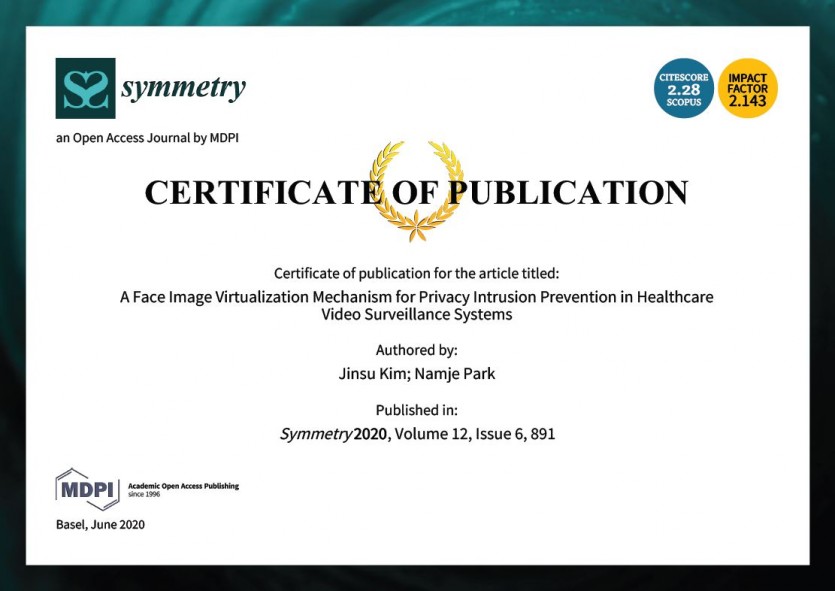A Face Image Virtualization...(symmetry MDPI, 2020.06)
페이지 정보
본문
논문명
A Face Image Virtualization Mechanism for Privacy Intrusion Prevention in Healthcare Video Surveillance System
Abstract
Closed-circuit television (CCTV) and video surveillance systems (VSSs) are becoming increasingly more common each year to help prevent incidents/accidents and ensure the security of public places and facilities. The increased presence of VSS is also increasing the number of per capita exposures to CCTV cameras. To help protect the privacy of the exposed objects, attention is being drawn to technologies that utilize intelligent video surveillance systems (IVSSs). IVSSs execute a wide range of surveillance duties—from simple identification of objects in the recorded video data, to understanding and identifying the behavioral patterns of objects and the situations at the incident/accident scenes, as well as the processing of video information to protect the privacy of the recorded objects against leakage. Besides, the recorded privacy information is encrypted and recorded using blockchain technology to prevent forgery of the image. The technology herein proposed (the “proposed mechanism”) is implemented to a VSS, where the mechanism converts the original visual information recorded on a VSS into a similarly constructed image information, so that the original information can be protected against leakage. The face area extracted from the image information is recorded in a separate database, allowing the creation of a restored image that is in perfect symmetry with the original image for images with virtualized face areas. Specifically, the main section of this study proposes an image modification mechanism that inserts a virtual face image that closely matches a predetermined similarity and uses a blockchain as the storage area.
논문 정보
Jinsu Kim 1 and Namje Park 1,2,*
1 Department of Convergence Information Security, Graduate School, Jeju National University, Jeju City 63243,
Korea; kimjinsu@jejunu.ac.kr
2 Department of Computer Education, Teachers College, Jeju National University, Jeju City 63243, Korea
* Correspondence: namjepark@jejunu.ac.kr
Received: 31 March 2020; Accepted: 27 May 2020; Published: 1 June 2020
Symmetry 2020, 12, 891; doi:10.3390/sym12060891
첨부파일
-
symmetry-12-00891.pdf (4.7M)
0회 다운로드 | DATE : 2021-01-05 12:18:48
- 이전글CCTV-RFID enabled multifactor...(Multimedia Tools and Applications, 2020.06) 21.01.04
- 다음글IoT-Blockchain Enabled Optimized...(sensors MDPI, 2020.05) 21.01.04
댓글목록
등록된 댓글이 없습니다.

